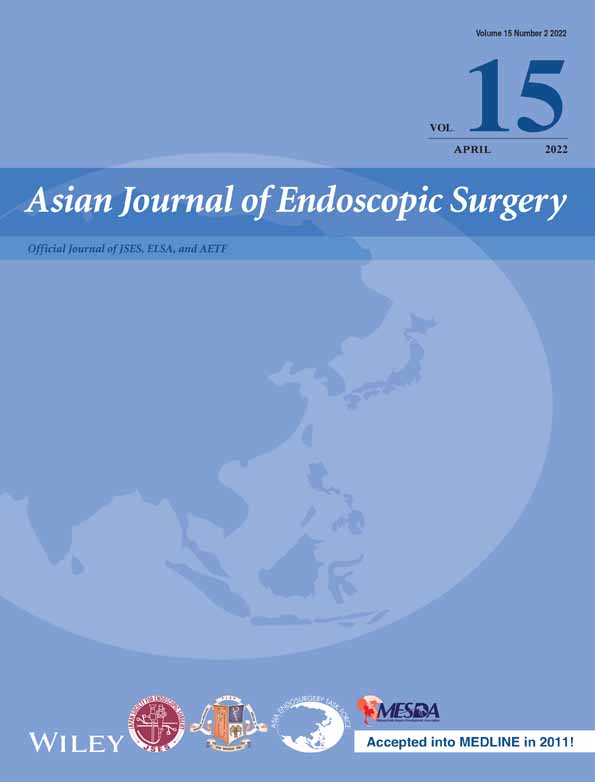Risks and benefits of pediatric inguinal hernia repair: Conventional open repair vs laparoscopic percutaneous extraperitoneal closure
All authors are in agreement with the content of the manuscript.
Abstract
Introduction
Considerable debate exists regarding the benefits of laparoscopic percutaneous extraperitoneal closure (LPEC) over conventional open repair (OR). We assessed the outcomes and feasibility of LPEC compared to OR for pediatric inguinal hernia (IH).
Methods
We retrospectively analyzed 570 children who underwent LPEC or OR. Parents decided the operative method after obtaining informed consent. Patient characteristics, operative time, complications and contralateral metachronous IH (CMIH) were compared between the groups.
Results
A total of 329 children underwent LPEC and 241 underwent OR. There was no significant difference in the incidence of recurrence or testicular ascent between the LPEC and OR groups (0.3% vs 0.4%, P = 0.825, 0.3% vs 0.8%, P = 0.391, respectively). No testicular atrophy was recognized in either group. One patient with postoperative chronic inguinal pain was recognized in each group. There was no surgical site infection (SSI) in the OR group; however, the LPEC group more frequently demonstrated umbilical port site (UPS)-related complications, such as incisional hernia, minor deformity, granuloma formation, cellulitis and superficial SSI. Ten (4.1%) developed CMIH in OR; in contrast, no case of CMIH was experienced after LPEC (P < 0.001).
Conclusion
In conclusion, both LPEC and OR are feasible in the management of pediatric IH, because of their high success rates and low risk of complications. LPEC could be the superior procedure with respect to the prevention of CMIH. However, to maximize the merits of LPEC over OR, it is important to reduce UPS-related complications in LPEC. A longer follow-up is needed to assess male fertility in patients who receive LPEC.
CONFLICT OF INTEREST
The authors declare no conflicts of interest in association with the present study.
Open Research
DATA AVAILABILITY STATEMENT
Research data are not shared.




